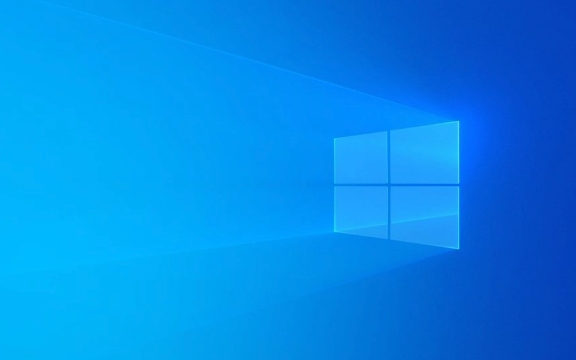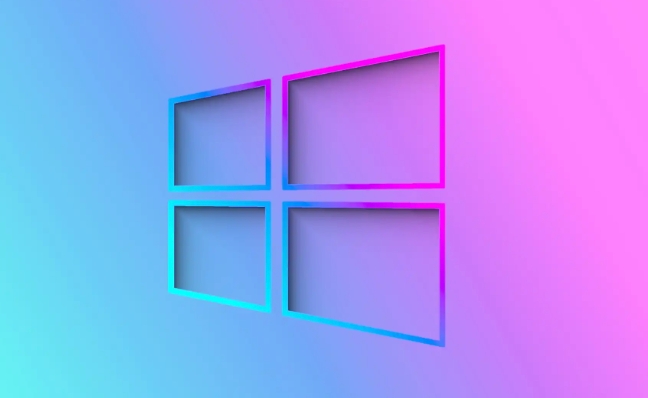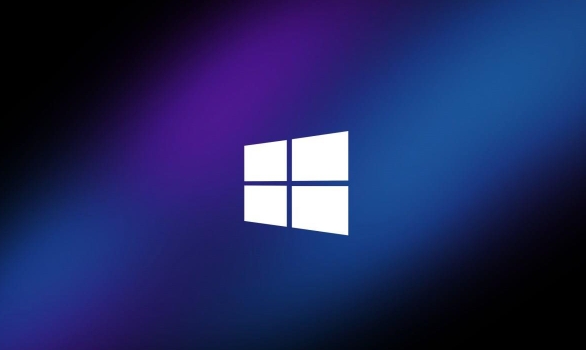How to fix the Blue Screen of Death (BSOD) in Windows?
Blue Screen of Death (BSOD) is usually caused by hardware, driver or system file problems. You can troubleshoot and fix it through the following steps: 1. Check the recently installed hardware or driver, uninstall or roll back unstable devices; 2. Run sfc /scannow, DISM, chkdsk and other tools to scan system files and disk errors; 3. Use memory diagnostic tools to test memory failures; 4. Update the system and analyze the problem of positioning specific modules in the blue screen log. In most cases, it can be solved through gradual investigation.

Blue Screen of Death (BSOD) is one of the last pictures Windows users want to see. It usually means that the system has encountered a serious error and must be restarted to continue running. Although it looks scary, it can be troubleshooted and fixed in most cases. Below are some common reasons and corresponding solutions to help you quickly deal with the blue screen problem.

Check for recently installed hardware or drivers
Many blue screen problems are actually related to hardware or drivers. For example, if you just installed a new graphics card, memory stick, or updated the driver of a certain device, it may be incompatible.
Suggested practices:

- Remove the recently added hardware and see if it's still blue.
- Roll back or uninstall recently updated drivers, especially graphics cards, sound cards, and motherboard-related drivers.
- Use the "Backback Driver" feature in Device Manager to go back to the previous stable version.
- If you are not sure which driver has a problem, you can try to enter safe mode and check it one by one.
In this case, the blue screen code is usually INACCESSIBLE_BOOT_DEVICE or DRIVER_IRQL_NOT_LESS_OR_EQUAL , which can be further positioned according to the specific error code.
Scan system files and memory issues
System file corruption or memory failure is also a common cause of blue screen. Windows comes with some tools to help you check these problems.

Operation suggestions:
- Run
sfc /scannowcommand to scan and repair the system files. - If this command doesn't find anything, try
DISM /Online /Cleanup-Image /RestoreHealthto fix deeper system image problems. - Checking memory can be done using the Windows built-in "Windows Memory Diagnostics" tool, or it can be tested more thoroughly using MemTest86.
- If there is a problem with the hard disk, use
chkdsk /f /rto check for disk errors.
These tools do not require additional downloads and can basically be run in a command prompt. If the system cannot be started, you can enter the recovery environment by installing the USB flash drive.
Update the system and view the blue screen log
Sometimes Microsoft has released patches for certain issues, but your system has not been updated yet. In addition, the log files generated during blue screen also contain key information.
You can do this:
- Make sure that the Windows system has been updated to the latest version.
- Use the "Event Viewer" to view the system logs, find the time point before and after the blue screen occurs, and see if there are any obvious abnormalities.
- Use WinDbg or BlueScreenView and other tools to analyze the .dmp file and find out the specific module that triggers the blue screen.
Pay attention to check the error name on the blue screen (such as PAGE_FAULT_IN_NONPAGED_AREA ) to lock the source of the problem faster with the analysis log.
Basically these commonly used methods. Don’t panic when encountering blue screens. Start with recent changes and gradually troubleshoot software and hardware problems. Most of the situations can be solved.
The above is the detailed content of How to fix the Blue Screen of Death (BSOD) in Windows?. For more information, please follow other related articles on the PHP Chinese website!

Hot AI Tools

Undress AI Tool
Undress images for free

Undresser.AI Undress
AI-powered app for creating realistic nude photos

AI Clothes Remover
Online AI tool for removing clothes from photos.

Clothoff.io
AI clothes remover

Video Face Swap
Swap faces in any video effortlessly with our completely free AI face swap tool!

Hot Article

Hot Tools

Notepad++7.3.1
Easy-to-use and free code editor

SublimeText3 Chinese version
Chinese version, very easy to use

Zend Studio 13.0.1
Powerful PHP integrated development environment

Dreamweaver CS6
Visual web development tools

SublimeText3 Mac version
God-level code editing software (SublimeText3)
 How to fix 'This app can't run on your PC' in Windows?
Aug 14, 2025 pm 08:28 PM
How to fix 'This app can't run on your PC' in Windows?
Aug 14, 2025 pm 08:28 PM
Runthe.exefileasadministratorbyright-clickingitandselecting"Runasadministrator";ifsuccessful,permanentlyenablethisbygoingtoProperties→Compatibilitytab→check"Runthisprogramasadministrator"→Apply;2.Enablecompatibilitymodeforolderpro
 How to fix missing MSVCP71.dll in your computer? There are only three methods required
Aug 14, 2025 pm 08:03 PM
How to fix missing MSVCP71.dll in your computer? There are only three methods required
Aug 14, 2025 pm 08:03 PM
The computer prompts "MsVCP71.dll is missing from the computer", which is usually because the system lacks critical running components, which causes the software to not load normally. This article will deeply analyze the functions of the file and the root cause of the error, and provide three efficient solutions to help you quickly restore the program to run. 1. What is MSVCP71.dll? MSVCP71.dll belongs to the core runtime library file of Microsoft VisualC 2003 and belongs to the dynamic link library (DLL) type. It is mainly used to support programs written in C to call standard functions, STL templates and basic data processing modules. Many applications and classic games developed in the early 2000s rely on this file to run. Once the file is missing or corrupted,
 How to call up the laptop without sound? Steps to restore the soundlessness of Apple laptop with one click
Aug 14, 2025 pm 06:48 PM
How to call up the laptop without sound? Steps to restore the soundlessness of Apple laptop with one click
Aug 14, 2025 pm 06:48 PM
Laptop silent? Easy troubleshooting and solving! Laptops are a must-have tool for daily work and study, but sometimes they encounter silent troubles. This article will analyze in detail the common causes and solutions for laptop silence. Method 1: Check the volume and audio equipment connection First, check whether the system volume setting is normal. Step 1: Click the taskbar volume icon to confirm that the volume slider is not muted and the volume is appropriate. Step 2: In the volume control panel, check the "Main Volume" and "Microphone" volume settings to ensure that the volume of all applications has been adjusted correctly. Step 3: If you are using headphones or external speakers, please check that the device is correctly connected and turned on. Method 2: Update or reset audio that is outdated or damaged by the audio driver
 How to Fix the BAD_POOL_CALLER Blue Screen Error in Windows
Aug 16, 2025 am 02:47 AM
How to Fix the BAD_POOL_CALLER Blue Screen Error in Windows
Aug 16, 2025 am 02:47 AM
Restartyourcomputertoresolvepotentialtemporaryglitches.2.BootintoSafeModebytriggeringAutomaticRepairandselectingStartupSettingstoisolatetheissue.3.Uninstallorrollbackrecentlyinstalleddriversorsoftware,especiallygraphics,network,orstoragedrivers,andup
 How to fix R.E.P.O. causing blue screen of death (BSOD) errors
Aug 15, 2025 am 06:47 AM
How to fix R.E.P.O. causing blue screen of death (BSOD) errors
Aug 15, 2025 am 06:47 AM
IfBSODiscausedbyR.E.P.O.,trythesesteps:1.UninstallR.E.P.O.software.2.DisablerelateddriversinDeviceManager.3.Performacleanboot.4.Updateorrollbackdrivers.5.RunSFCandDISMtorepairsystemfiles.
 There is no sound on the win10 HDMI external monitor
Aug 14, 2025 pm 07:09 PM
There is no sound on the win10 HDMI external monitor
Aug 14, 2025 pm 07:09 PM
**Computer model information: **Brand model: HP Shadow Blade, System version: Windows 10 encounters the situation where the Win10 system connects to an external monitor through HDMI? Don't worry, check the following two points first: Whether the audio device is connected normally: Make sure the external monitor itself is functioning properly, and check whether the audio output settings of Windows 10 computer are correct. HDMI connection cable and interface: If there is no problem with audio settings, it is recommended to try changing the HDMI cable or adjusting the connection method. Common reasons and solutions for silent external display of Win10HDMI: Under Win10 system, silent external display of HDMI is usually caused by the following two reasons: Audio setting error: The computer's audio output device is not set correctly
 How to check your hard drive health on Windows
Aug 14, 2025 pm 09:35 PM
How to check your hard drive health on Windows
Aug 14, 2025 pm 09:35 PM
UseCHKDSKbyopeningCommandPromptasAdministratorandrunning"chkdskC:/f/r"tocheckandfixfilesystemerrorsandbadsectors,schedulingitonrebootifnecessary.2.UsePowerShellasAdministratorandrun"Get-PhysicalDisk|Get-StorageReliabilityCounter"t
 What should I do if there is no sound on the microphone? 7 ways to deal with computer microphone without sound
Aug 14, 2025 pm 07:06 PM
What should I do if there is no sound on the microphone? 7 ways to deal with computer microphone without sound
Aug 14, 2025 pm 07:06 PM
Computer microphone troubleshooting guide: 7-step solution to microphone silent puzzle Computer microphone is a must-have tool for office, study and entertainment, but microphone silent problems occur from time to time. This article provides 7 methods to help you quickly diagnose and solve the silent problem of computer microphones. 1. Hardware connection check First, check the physical connection of the microphone: Plug connection: Make sure the microphone is firmly inserted into the computer audio interface and pay attention to the direction of the plug. Power supply: USB or wireless microphone needs to check the power switch and battery power. Interface switching: Try to use other audio interfaces of your computer. Device Test: Connect the microphone to another device (such as a mobile phone) to test its functionality. 2. System Settings Check (Windows & Mac) Hardware None







